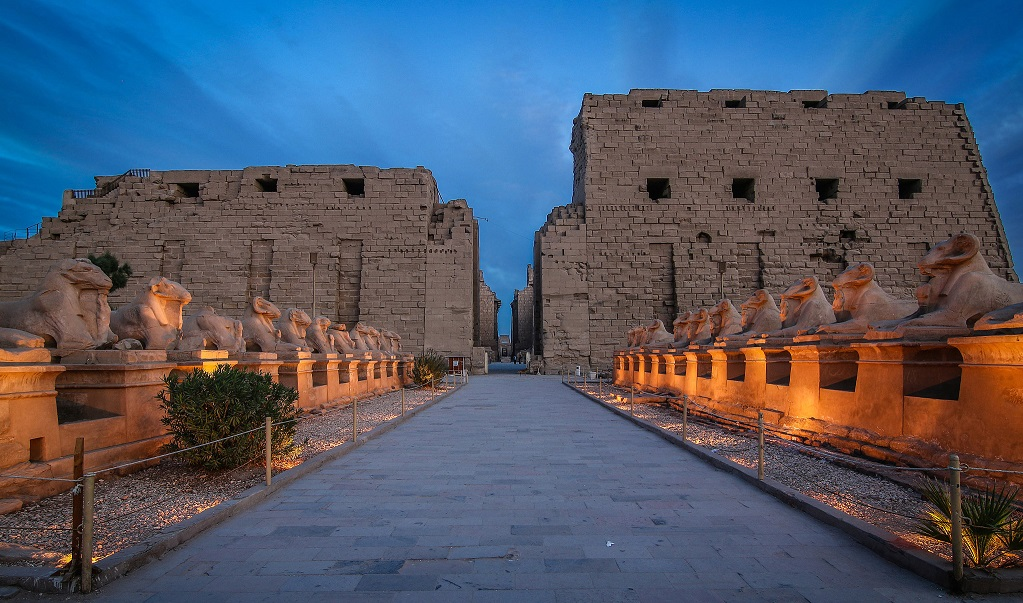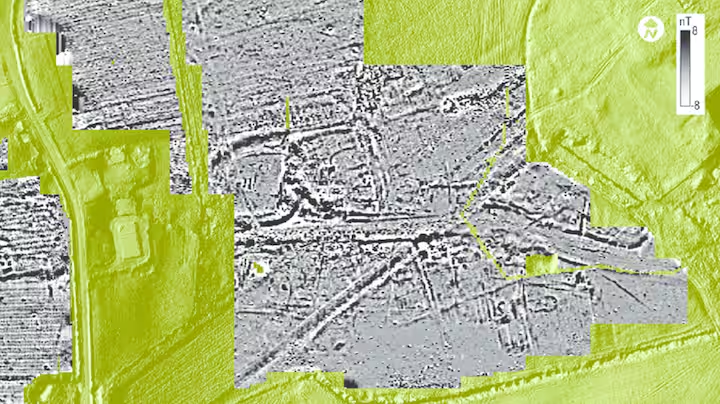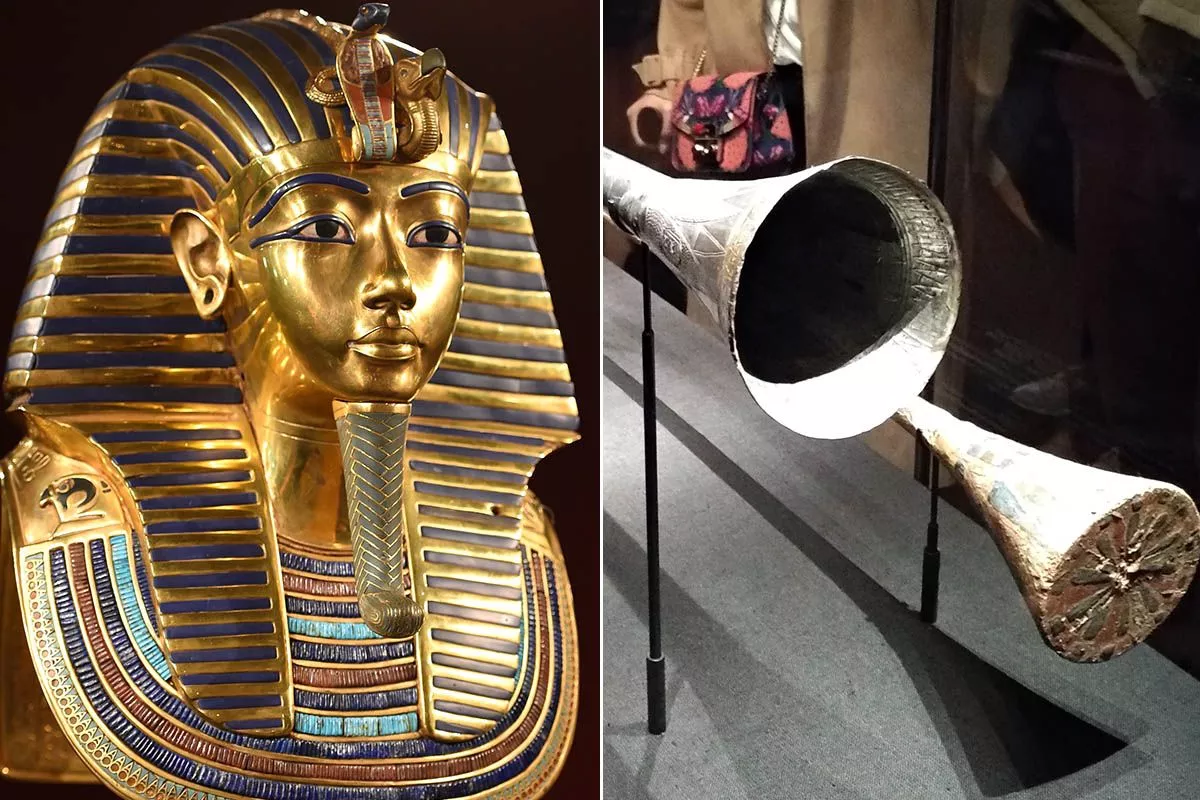At the end of the XXth Dynasty, something absolutely outrageous for Egyptian history occurred: southern kings. The High Priest of Amun at Thebes, a man named Heri-Hor, wrote his name in a cartouche indicating that he was king of Egypt. He built his temple at Karnak Temple, dedicated to Khonsu. On the walls of the temple, he is shown the same size as the king of Egypt, who is ruling in the north.
By building himself a temple at Karnak Temple, where he is shown the same size as the king in the north, Heri-Hor announced himself as king. (Image: Tizianok/Public domain)
How Did the Southern Kings Divide Egypt?
So in a sense, he’s claiming I’m king of Egypt also. Two people claim to be Egypt’s king—one is Ramses XI in the north and the other Heri-Hor.
Now how does this happen? Well, the dynasty we’re going to look at today, the XIh Dynasty, is unique. It’s, in a sense, a tale of two cities. We have two simultaneous dynasties ruling. One from the north. And one from the south. We have the descendants of Heri-Hor calling themselves kings, ruling from Thebes. And in the north, we have a separate dynasty, also calling themselves kings.
Many Egyptologists think that what we’ve got really is warring factions. We’ve got the Hatfields and the McCoys slugging it out over who was king of Egypt. However, we have a kind of peaceful co-existence.
Let’s start with the priest-kings of the south. These people are all high priests of Amun, and they are ruling from Thebes. The one who starts this whole thing is Heri-Hor, the high priest who builds his little temple there, depicts himself as large as the king and puts his name in a cartouche. He died before Ramses XI, who was ruling in the north. He is succeeded by another High Priest of Amun—Piankh. Piankh died about the same time as Ramses XI. In the south, in Thebes, we have a pattern established. The high priest will take over and call himself king.
Pinedjem and His Co-existence with the King in the North
Now, the next high priest who rules in Thebes is Pinedjem. And he is important. Now first, how does he become a high priest? Well, that’s hereditary. You didn’t have to have a special religious calling to be a priest. You just had to say the right words, do the deeds. So, he can do that easily enough.
But how does he become king? There’s a theory that you became pharaoh by marrying the right woman. The heiress theory is that a woman carries the right to be king in her royal blood. So whom does he marry? He married the daughter of Ramses XI, the king who had ruled in the north. But Pinedjem does other things, not just marrying a daughter.
Now, he’s the high priest. One of his jobs is to make sure that the religion remains intact. And he has an inspection of the Valley of the Kings, in which he discovers the tombs of the pharaohs have been plundered. Now remember, he’s trying to be a king himself. So he is going to view these people as pharaohs and his ancestors, both. He restores the mummies. He has some of them rewrapped, and he labels them. So he’s trying to carry out what a pharaoh should do.
He also dates his reign in a very interesting way. The pharaoh was so central to the Egyptian mentality that their calendar depended on who was king. It was a pharaoh-centric calendar. Still, Pinedjem dates his years according to the king who was ruling in the north. Somebody who’s now replaced, Ramses XI. This is a sign of deference to the kings of the north that they’re really the kings.
Pinedjem II moved the mummies of pharaohs from the Valley of the Kings to Deir el Bahri, where he was mummified and buried. (Image: G. Elliott Smith/Public domain)
But Pinedjem dies. And he’s succeeded by two of his sons, Masaherta and Menkheperre. These guys don’t reign for long. Menkheperre’s successors are two of his sons. One is Smendes II, who reigns for a few years, and the next is Pinedjem II.
Pinedjem II and the Revolution in Pharaoh Burials
Pinedjem II carries out another inspection of the royal necropolis. He finds that virtually all of the tombs have been robbed. He realizes the Valley of the Kings cannot be protected anymore. He’s given up on the Valley of the Kings. Things have deteriorated so much in Egypt that he’s got to move the mummies.
He gathers together many of these mummies and has them moved to a secret cliff tomb at Deir el Bahri. He thinks that this tomb is so safe that he will choose it as his final burying place. And it is safe. It has remained safe for more than 3,000 years. So no longer will the pharaohs be buried in the Valley of the Kings.
After Pinedjem II dies, he is buried in his safe tomb. And he’s succeeded by a minor king—Psusennes. With him, this minor pharaoh, it’s the end—it’s the end of these high priests ruling out of Thebes.
Common Questions about the Southern Kings of Dynasty XXI
Q: How did high priests get to rule as southern kings in the first place?
Heri-Hor began the dynasty of the southern kings by appointing himself king. Then he put his name in a cartouche and built a temple where he is represented as important as the king in the north. After that, the high priests of Thebes in the south took over the role of king.
Q: During the reign of Pinedjem, how was the relationship between the king in the north and the southern kings?
Pinedjem and the king in the north, Ramses XI, ruled the land peacefully. Pinedjem married the daughter of Ramses XI, and he kept his dates according to Ramses XI. This was significant because each pharaoh counted his reigning years in a pharaoh-centred calendar. By choosing the Ramses XI calendar, Pinedjem made it clear that the southern kings considered the king in the north to be the true ruler.
Q: How did the southern kings revolutionize pharaoh burials?
Pinedjem II inspects the Valley of the Kings when he becomes king. During the inspection, he finds that all the tombs have been robbed. He concludes that the Valley of the Kings is no longer safe and moves the mummies he found and restored in the tombs of Thebes to a safe place called Deir el Bahri, where he was buried along with other southern kings.







